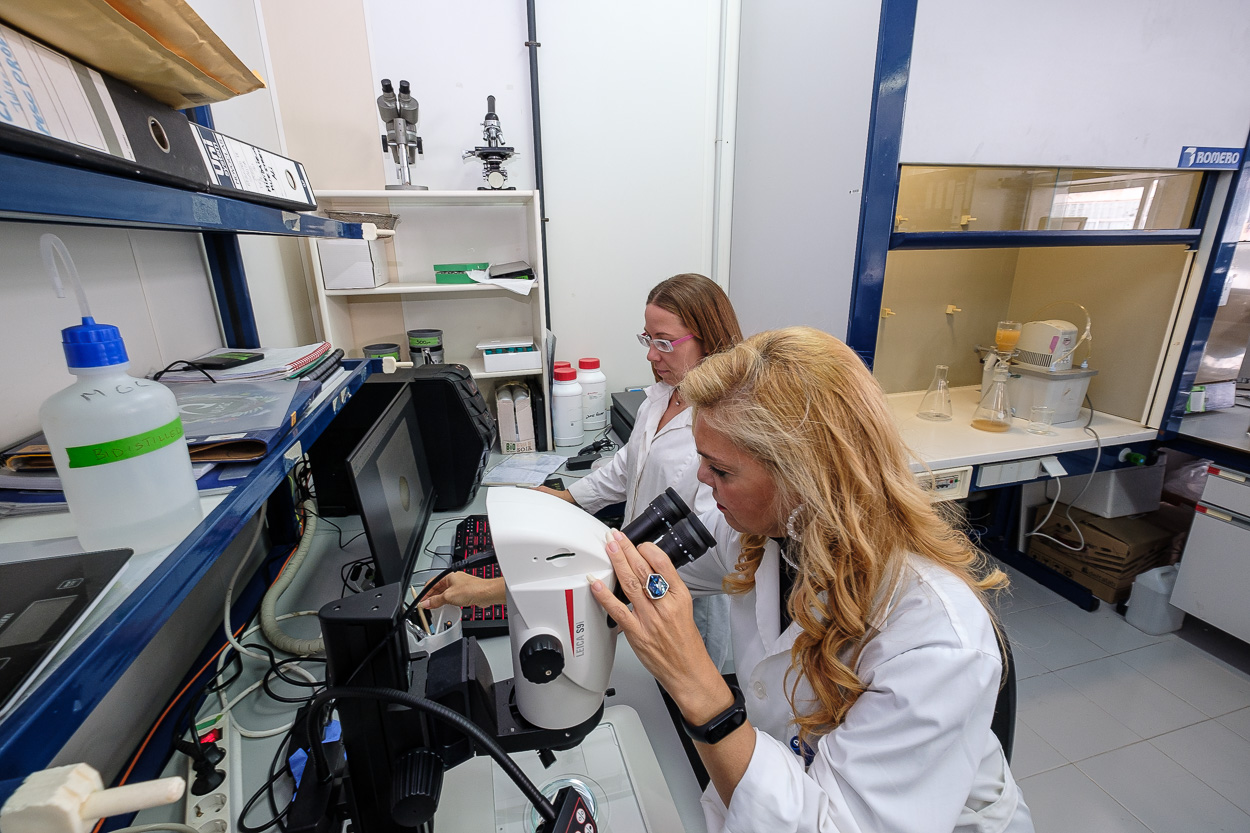The study developed by the Marine Ecophysiology Research Group (EOMAR) of the University Institute ECOAQUA of the ULPGC, documents for the first time the ingestion of plastics in farmed sea bass, one of the most important commercial fish species in the world.
Research by the EOMAR group of the University Institute for Research in Sustainable Aquaculture and Marine Ecosystems (ECOAQUA) of the University of Las Palmas de Gran Canaria, recently published in the prestigious journal 'Marine Pollution Bulletin', documents for the first time the ingestion of plastics in farmed sea bass, one of the most important commercial fish species in the world.
The study, entitled 'Evidence of microplastic ingestion by farmed sea bass (Dicentrarchus labrax)', in which the Earth and Environmental Science Department of the University of Milan Bicocca (Italy) and the Oceanographic Centre of the Canary Islands also participated, reveals that of the 83 sea bass examined, 53 had ingested some type of waste of human origin, which represents 65% of the total sample investigated.
In total, 119 anthropogenic waste particles were found to be present in the digestive tracts of fish studied between 2016 and 2017, the majority of which, 97.5%, were microplastics smaller than 5 millimetres.
Most of the plastics found in the sea bass were made of cellulose fibres or cellophane, fragments of polypropylene (PP) and polyethylene (PE), one of the most common and widely used plastics worldwide, thanks to the simplicity and low cost of their manufacture. However, less common polymers such as polynorbornen or phenolic resin (found for the first time in the digestive tracts of fish), or remains of fishing nets and films, were also found.
The evidence on the colours of the particles (26% blue, 24% yellow, 17% black and 14% transparent), together with their morphology and the types of polymers found in combination with the location of the aquaculture cages, make the researchers who signed the study: Stefanie Reinold, Alicia Herrera, Francesco Saliu, Carlos Hernández-González, Ico Martínez, Marina Lasagni and May Gómez; suspect about the existence of a relevant connection between pollution caused by urban centres, tourist and marine leisure activities, sewage treatment plant sinks, among other factors, with which the figure could be similar if the study carried out referred to capture fish.
In fact, last year, another study by ECOAQUA researchers from the ULPGC, which also involved Alicia Herrera, Ico Martínez and May Gómez, among others, in collaboration with the Polytechnic University of Valencia and the University of Delaware (USA), found that 94 of the 120 mackerel bought from fishermen's associations in Lanzarote and Gran Canaria for their research, contained microplastics in their stomachs, 80% of the total sample. In this case, 260 polymer particles smaller than 5 millimetres were found in the digestive tracts of this other commercially important marine species.
As a result of these studies by the ECOAQUA EOMAR group, the researchers warn of the urgent need to "raise awareness of this problem and improve the regulation and management of wastewater discharges into the open sea".
“Marine Pollution Bulletin”, which records this research at the following link, is one of the world's leading scientific journals on marine pollution. It is ranked Q1 in the field of marine biology and has an impact factor of 4.049, according to the Journal Citation Reports 2020.


